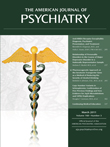Response to Aubin et al. Letter
To the Editor: We are grateful to Dr. Aubin et al. for their comments. As with altitude, smoking also appears to be a risk factor for suicide, possibly by decreasing the availability of oxygen. In the United States, there is a negative correlation between altitude and smoking rates at the state level (r=−0.36, p=0.01). This relationship was assessed using state-level smoking data in the United States from the Indiana Tobacco Prevention and Cessation project (http://www.tobaccofreedelawarecounty.org/documents/Smokingratesbystate2006.pdf) and altitude data from U.S. Geological Survey data, as in our published paper. This association suggests that the relative hypoxia associated with altitude may be a deterrent to smoking. However, other conditions that have been linked to hypoxemia or hypoxia, such as sleep apnea, air pollution, and asthma, have also been reported to increase the risk for suicide. Further research will be needed to clarify the role that metabolic stress plays in rates of self-harm in vulnerable populations.



